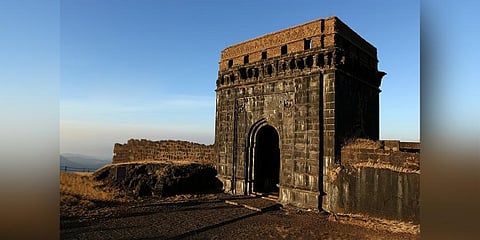

MUMBAI: As the country celebrates the 350th anniversary of the coronation of Chhatrapati Shivaji Maharaj, Maharashtra eagerly awaits the UNESCO World Heritage tag for a series of 14 Maratha forts, dotting the lush green Western Ghats and the picturesque coastal Konkan region of the state.
Since 2012, the Western Ghats have already a UNESCO World Heritage site, a long, green, hilly tract extending from south Gujarat to North Kerala with the major portions falling in Maharashtra and Karnataka.
Experts are now rooting for 14 forts – symbolising “Maratha Military Architecture” – which have already made it to UNESCO’s tentative list since April 2021, and now await a formal nod as a World Heritage site.
They are the forts at Raigad (the capital of the Maratha Empire), Shivneri, Rajgad, Torna, Lohagad (all Pune), Salher, Ankai-Tankai, Mulher (all Nashik), Rangana (Kolhapur), Alibaug, Padmadurg, Khanderi (Raigad), Sindhudurg (Sindhudurg district), and the Suvarnadurg (Ratnagiri), some dotting the 720-km long coastline, offshore or in the Western Ghats, most still tall and imposing.
Andhra Pradesh Government Heritage Committee Member Bhujang Bobade, who is the founder of the Heritage Foundation at Jalgaon (Maharashtra), said after these forts get the final UNESCO green signal, it will accord a halo of respect, give a huge boost to domestic and international tourism, pave the way for their proper conservation efforts, provide a fillip to the local economy and generate revenues for the state.
The Arabian Sea coastline, and the Western Ghats as well as the Sahyadri range extending upto Marathwada, were the perfect setting for guerrilla warfare tactics. In the medieval period, Arabs, Turks, Europeans, and Africans appeared in the Konkan region and proceeded to the hinterlands.
At that time Shivaji Maharaj, who was later crowned as the Chhatrapati, established Swarajya (self-rule) and held out against the mighty Mughal Empire – which was extending from modern-day Uzbekistan to Bengal and controlled around 20 per cent of the contemporary global economy.
Mughal Emperor Aurangzeb was struggling to annex the southern Indian kingdoms to extend his rule to peninsular India, but it was the Maratha Kingdom that resisted his bulldozing march down south.
This was attributed to the best use of the hilly terrain, constructing forts on plain lands, hills and the long sea coasts that arrested the advent of the Mughal Empire.
In 1674, Chhatrapati Shivaji Maharaj founded the Maratha Empire, and within 75 years after his death (1680), it had covered one-third of the Indian Subcontinent, deploying guerrilla warfare with the best political and territorial results.
The Marathas even succeeded in keeping the later-day British Empire at bay, but after they were overpowered through various Anglo-Maratha wars (including the Bhima-Koregaon battle), the Britishers managed to plant their flag over the region, plus the Portuguese and French in tiny pockets.
Bobade said that these Maratha Forts are of immense significance in the political, military and architectural history of the region, where it was a continuous ongoing activity.
The Directorate of Archaeology and the Maharashtra government had finalised the list of 14 unique Maratha Forts which are now on UNESCO’s tentative list.
Bobade explained that after going through the entire process, UNESCO declares them as a World Heritage, and normally this takes a minimum of five years, unless “influence” is used by India on the global stage to expedite it.
Through the Heritage Foundation, Bobade has trained over 98,000 people from 42 countries in heritage-related short-term certificate courses in 40 fields at affordable rates, ranging from 1 week to 1 year in duration, which open up lucrative career options in this field and are recognised by various universities.
“I am creating a future workforce with specific courses on various aspects of art, architecture, heritage, conservation, music, dance, museums, drawings, paintings, etc., most of which are not available anywhere in the country and outside, thus empowering the learners to explore different careers,” said Bobade.